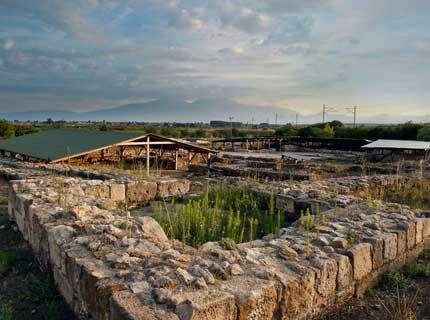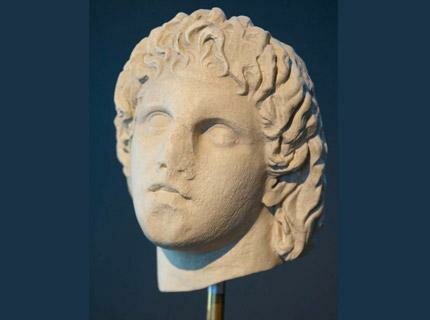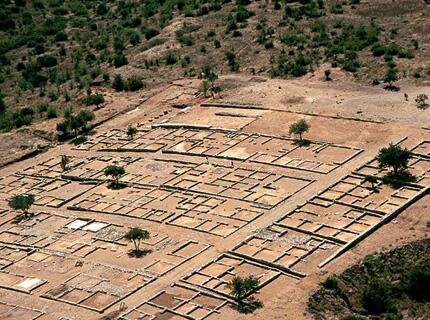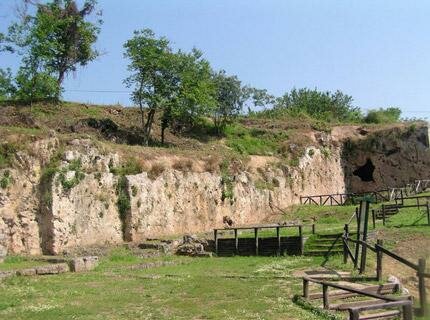E. Heuzen and N.Hammond posit that this was the site of the Battle of Pydna (168 B.C.), the outcome of which being the subjugation of the Macedonians to the Roman Empire.
The ruins of a Bishop's Palace from the 5th-6th C. was found to the east of the railway line from Thessaloniki to Athens. A square tower, 80x90 m. was found situated on the Ancient Road from Pydna to Dion. The area was built on a plan which included four fortified towers, within the confines of which a 3 chambered Basilica and a Bishop's Palace, bounded by a covered aisle have been found. The foundations of the buildings from 479 AD are probably those of the seat of the Bishop of Pydna.
The Bishop's Palace was built on the ruins of the 2nd century baths, a mosaic floor having been found beneath its floor, and to the East of the Palace is a villa with mosaic floors dating from the time of Konstantinou and the foundations of a building which were probably those of the local tax collector's offices. The plan with four towers remained until the time of Justinian, when its fortified character changed due to the enlargement of the warehouses and workshops for the production of wine and olive oil. It was destroyed by an earthquake in the middle of the 6th Century, after which the church was rebuilt on the central slope, the previous building area being converted into a cemetery.
The town must have been abandoned during the Bulgarian invasion at the end of the 9th Century. Today's visitor can see three of the towers, the Bishops Palace, the mosaic floors of the 4th C villa, the tombs, the springs, the ovens for baking the tiles and those in which glass was fired.



